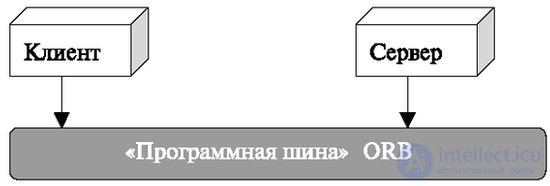Lecture
Annotation: This lecture deals with the software of stations operating in a telecommunications network [31]
The main features of this software are inherent in many systems that use software today and are not unique. Just list them in order to understand the problems to be solved.
Software stations operating in a telecommunications network, has the following characteristic properties.
It means that:
In addition, such programs are characterized by an industrial approach, the main features of which are:
These concepts imply the possibility of installing, adding, correcting and replacing components and software as a whole without involving its creators;
This task implies the availability of tools to monitor the actions of the software and the environment. It also concerns the creation of a friendly interface.
We repeat that these properties are characteristic not only for telecommunication tasks, but also belong to systems using "industrial software".
The task of this section does not include consideration or even more criticism of various programming systems. As one of the creators of the theoretical approach to programming, E. Dijkstra [25] noted: "The Tower of Babel of Languages grows, and each subsequent one claims to be its crown." The task of this section also does not include the evaluation of various software solutions. Today one thing is clear that "there is no better than the language you know."
The approach proposed in this section was created for the development of domestic program-controlled telecommunications systems. It is displayed in books and many articles (for example, [9, 13, 44, 45]). This approach was developed in the 1970s, and now it can be classified as an object-oriented programming system.
Without claiming to review systems belonging to the object-oriented class, we give the basic definitions of the object-oriented approach. Note that later he will meet more than once in this course, for example, when considering issues of operation and management of communication networks [29, 52].
After reviewing the general issues, we will move on to the domestic method.
The basis of this approach is the following concepts.
For building software, its development and operation, many applications use the Common Object Request Broker Architecture (CORBA) - Common Architecture with sending requests to an object through an intermediary. Basic information about this architecture can be found in [18, 29, 52, 68]. Often it is classified as a system for working with distributed computing resources. Its properties largely correspond to the requirements for the development and operation of software stations in telecommunications networks listed at the beginning of this section.
A portion of the CORBA architecture that is required for further consideration is shown in Fig. 4.1.
According to modern classification, this architecture belongs to the client-server architecture class. As can be seen in fig. 4.1, there are two types of network devices:
Work is carried out by the server at the request of the client for the service.
The main feature of the CORBA architecture is the availability of the ORB (Object Request Broker) software bus. The ORB is "responsible" for distributing client requests to the appropriate servers, and is also a transport medium for interacting during the execution of a task. The details of this interaction are hidden from the user and exist as part of the implementation of the "software bus".
The following elements of interaction are usually hidden [18].
These ORB features enable application developers to concentrate on applications and not worry about the problems of distributed system programming of the lower level.
This approach simplifies modernization, search for failures and deviations from normal operation and other actions during the operation of the station.
Consider another method that corresponds to the stated properties of the object-oriented approach and distributed programming systems. It was used to create domestic switching systems.
This approach is reflected in many articles and books. For initial study can be recommended [7, 12, 13, 40, 44, 45].

Comments
To leave a comment
Telecommunication Services and Devices
Terms: Telecommunication Services and Devices